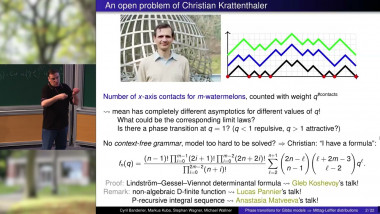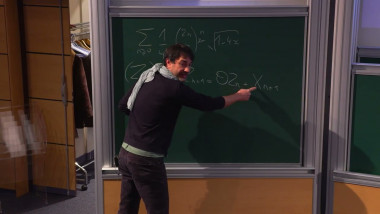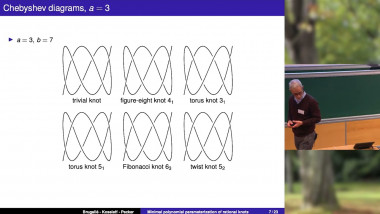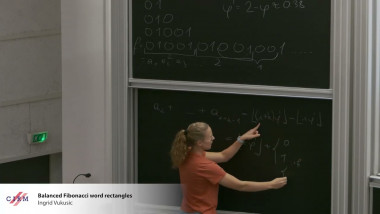Appears in collection : Les probabilités de demain 2017
Consider bond percolation on the hypercube ${0,1}^n$ at the critical probability p_c defined such that the expected cluster size equals $2^{n/3}$, where $2^{n/3}$ acts as the cube root of the number of vertices of the n-cube. Percolation on the Hamming cube was proposed by Erdös and Spencer (1979), and has proved to be substantially harder than percolation on the complete graph. In this talk, I will describe the percolation phase transition on the hypercube, and show that it shares many features with that on the complete graph. In previous work with Borgs, Chayes, Slade and Spencer, and with Heydenreich, we have identified the subcritical and critical regimes of percolation on the hypercube. In particular, we know that for $p=p_c(1+O(2^{-n/3}))$, the largest connected component has size roughly $2^{2n/3}$ and that this quantity is non-concentrated. In work with Asaf Nachmias, we identify the supercritical behavior of percolation on the hypercube, by showing that, for any sequence \epsilon_n tending to zero, but \epsilon_n being much larger than $2^{-n/3}$, percolation at $p_c(1+\epsilon_n)$ has, with high probability, a unique giant component of size $(2+o(1))\epsilon_n 2^n$. This also confirms that the validity of the proposed critical value. Finally, we `unlace' the proof by identifying the scaling of component sizes in the supercritical and critical regimes without relying on the percolation lace expansion. The lace expansion is a beautiful technique that is the major technical tool for high-dimensional percolation, but that is also quite involved and can have a disheartening effect on some.















